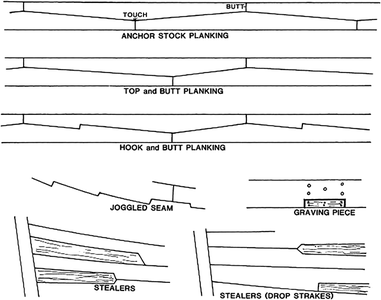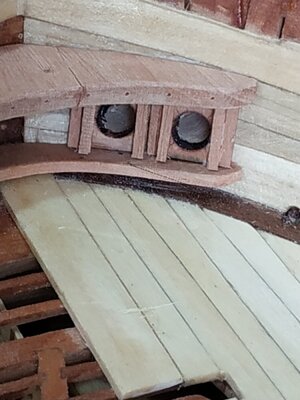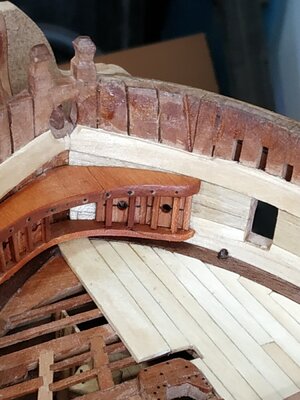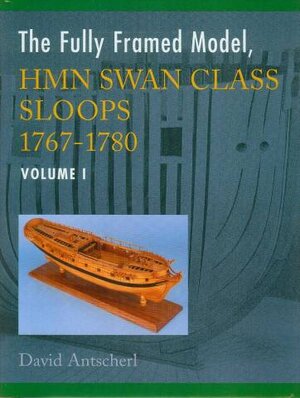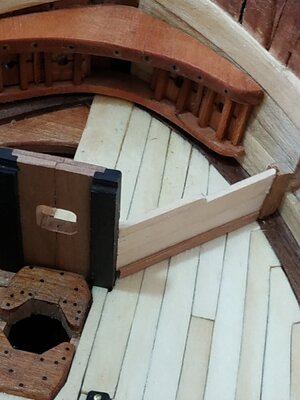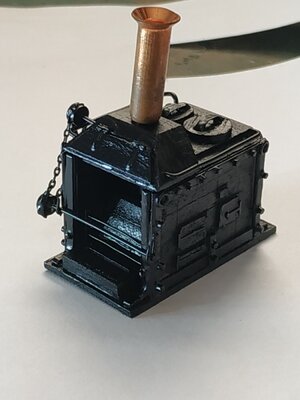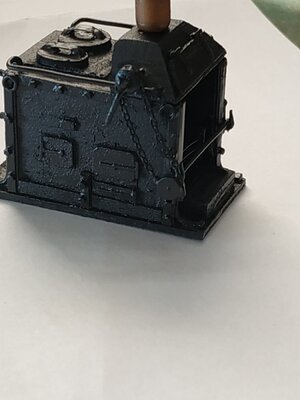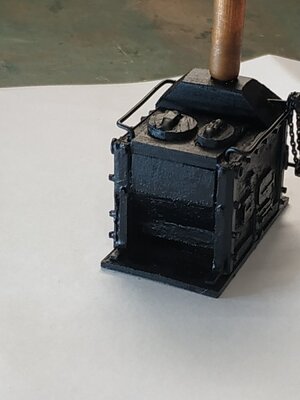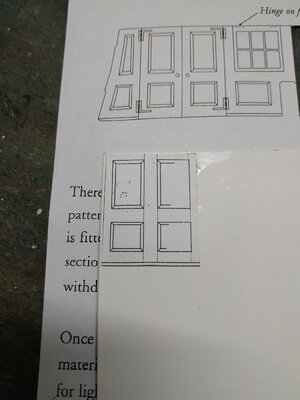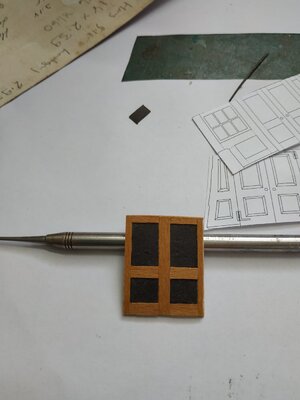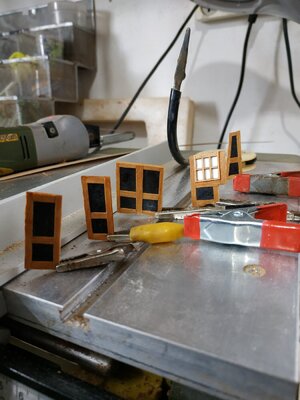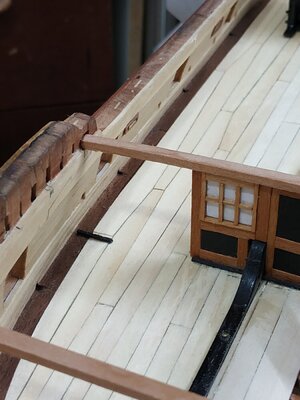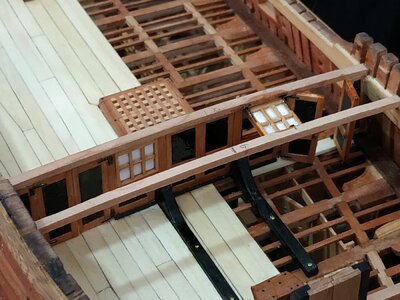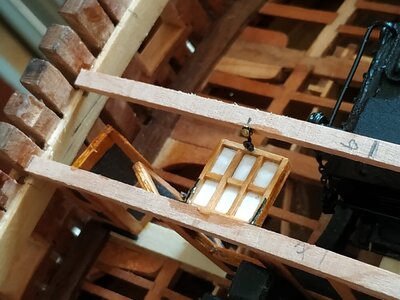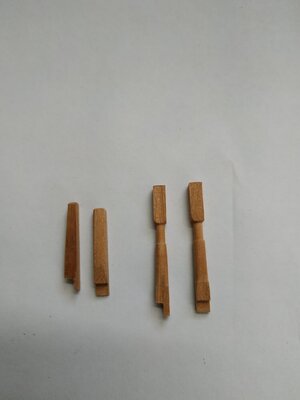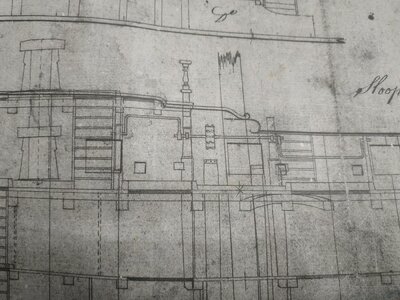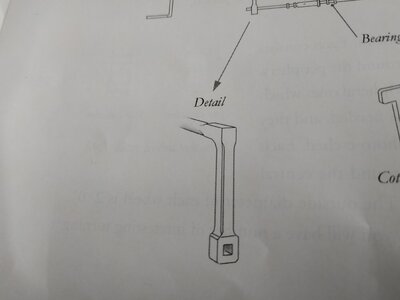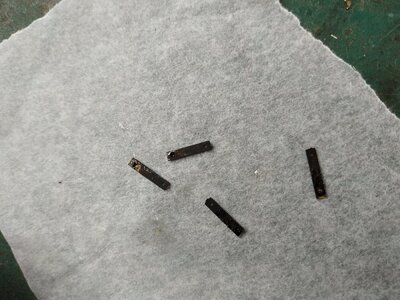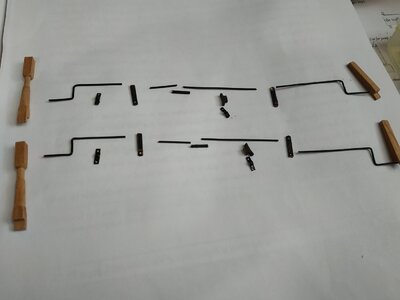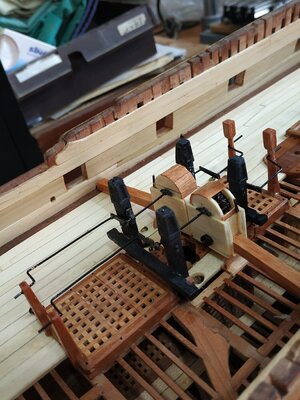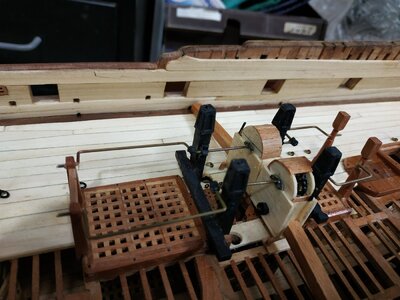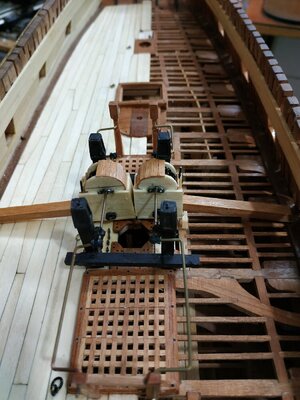Chain Pump Head Gear
The Cisterns.
These are wooden boxes covering the Chain Pumps where they protrude through the deck.
They sit on curved legs-the inboard which are shorter as they rest on the Main Mast Partner.
The base is 1.06mm with holes for the tubes.It should sit 5.83mm above the planks.There is little room for the inwards as the port and starboard Cisterns are “back to back”.
The pair of sidewalls are formed by planks of similar thickness.The ends taper slightly inwards.
The height is 15.9, the length and width to fit the Base
The inboard end is similarly made,and closes the rear of the box.
The outboard end is partially open with a shaped pair of “doorposts” tapering upwards. This allows a square drainage tube, the Pump Dale, to fit between.
To the side and above the Dale where it enters the Cistern, is a Slide, which is the same hight as the other walls.
Behind the Slide, is another pair of “door posts” to hold it in place. These, as well as cross-bracing pieces at both ends, are 1.6mm
Overall widths and heights are given for the assembly, 10.6mm and the top edge is maximum 43mm above the deck. This meant some shortening of the legs in my build.
On the fore side us a circular DrainHole 4.77. After several failed attempts to drill and file this out, I made the plug and pinned it into position.
The Cistern Hood.
Semicircular sides, again 1.06 width, fit within the cistern walls. The ends are notched and rest on the Cistern cross pieces. At the lower center on both sides are cut outs to allow the Spindle of the Sprocket wheel to pass through.
The Top to be fitted after the Sprocket Wheel.
Sprocket Wheel.
Suddenly remembered that there were bits on my photo-etched sheet that were for this purpose.
The 2 disks are separated by 12 bolts, for which I used particularly thin pins I happened to have. They extend outside the disk by 0.5mm. The whole assembly fitting snugly within the Cistern Hood.
CHECK BEFORE GLUING.
The spindle itself was 1.6mmsq wood, long enough to support the Wheel on the Cistern side walls.
The chain also was made from the pieces on the photo-etched sheet.
They consist of thin plates (Links) bolted in pairs, and connected by a 3rd plate between them . Sort of 2-1-2-1-2 formation. For bolts,.25mm, I used copper wire, trimmed after gluing.
I cannot solder at any scale, especially this, so I used Cyano super glue.
There is fitted a disc, representing a leather washer or Saucer, on a single link every 19mm or so.
I did not attempt threading the links down the pump tubes. Rather draped it across the Sprocket Wheel.
The Cistern Hood was partially covered to display this mechanism. It was apparently a real feature. The covering slats are 0.4 boards.
A vertical metal tongue works a latch to allow this partial opening.
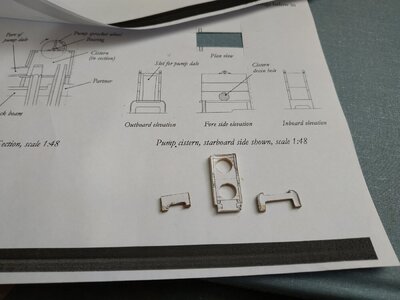


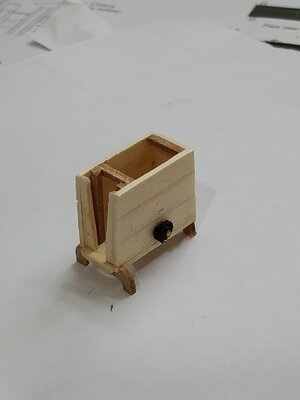
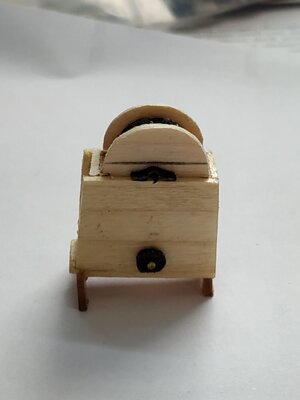
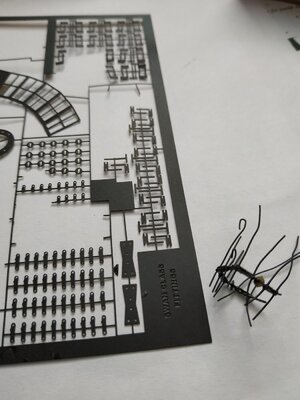
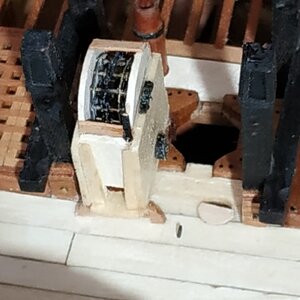
 stock planking (Fig. G-11a). A form of planking in which the longitudinal shapes of the planks resembled anchor stocks. It was similar to the top and butt method of planking and was intended to prevent shifting and increase the longitudinal strength of wales and other stress-bearing planks.
stock planking (Fig. G-11a). A form of planking in which the longitudinal shapes of the planks resembled anchor stocks. It was similar to the top and butt method of planking and was intended to prevent shifting and increase the longitudinal strength of wales and other stress-bearing planks.